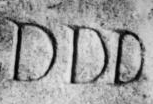
Inscriptions are objects, they can be monuments on their own as a funerary stele, part of a monument as a dedicatory inscription on a building, they can be occasionally written on a wall as a graffito or on a pottery slab. They are often accompanied by reliefs which in most cases are one thing with the text. Therefore it is impossible to deal only with the text of an inscription, only with it as a monument or object or to look only at the images. Researchers in epigraphy need to be archaeologists, philologists, and art historians, as well as experts in epigraphy as such. A holistic approach is becoming the rule, but paradoxically the questions posed by the digitization of epigraphic databases bring back these problems of description, as they are studied for museums which distinctly give priority to the object, or to the text which is one important component but not the only one of an inscription. In this room you will see some examples of inscriptions in which the relation between images, text and the context of the inscription are fundamental element for our understanding of the document, but all inscriptions are studied in this way.
Related Stories
- Story of ancient inn with relief and inscription: ITALIAN, ENGLISH
- A votive monument with relief and inscription with problems of interpretation
- bricks of the Ashmolean Museums
